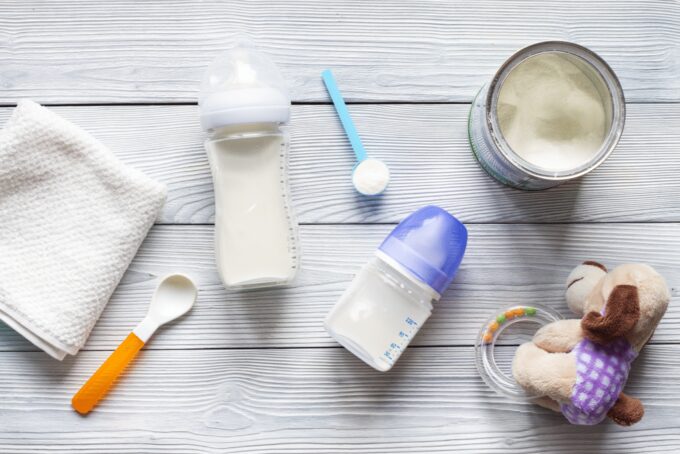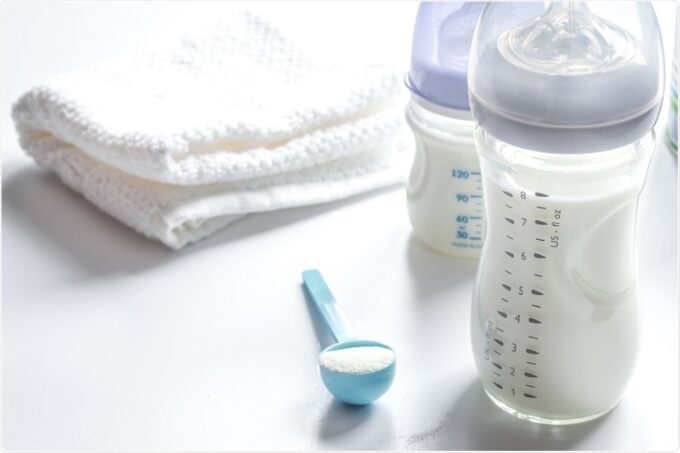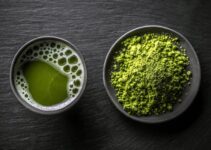Pediatricians all over the world agree in the opinion that the best food for a baby is breast milk. Its content adapts to the needs of a child at each stage of development. Unfortunately, not all mothers have an opportunity to breastfeed.
In such cases, parents face the difficult task of selecting the proper formula among the abundance of foods on the market. This task is especially difficult if a baby has an allergy.
Why does an allergy occur?

Source: strong4life.com
Food allergies are quite common during the first year of life. Statistics show that approximately 6–10% suffer from different food intolerance. The development of food allergy is based on complex mechanisms of the immune system.
Simply saying, this is an inadequately strong immune response to substances entering the organism. In the future, it could lead to a variety of diseases. Allergy to cow milk protein is the most common.
But why do some children tolerate any food, while others face allergies? It is influenced by a lot of factors, however, specialists distinguish the following reasons:
- the percentage of children who suffer from allergy increase if their direct relatives have allergic diseases
- bottle- and mixed-fed babies
- if one of the parents smokes, the probability of food intolerance is also high
The immaturity of the digestive system plays an important role in the presence of allergies, which is observed in absolutely all babies. During the first year, the gastrointestinal tract does not fully fulfill its protective functions. Therefore, allergens easily pass through the intestinal wall into the blood.
Specialty allergy formula

Source: milk-drunk.com
As it was mentioned before, milk protein is the main allergen, however, cow milk serves as the basis for almost all infant formula. Fortunately, there are hypoallergenic formulas containing milk protein in a hydrolyzed (split) form to reduce the allergenic potential.
Even though hypoallergenic feeding can be prescribed only by pediatricians, it is recommended for parents to understand which ingredients should be present in the contents and which are not.
For example, among the components you should avoid is palm oil because it binds to calcium in the intestine and forms insoluble compounds. It leads to constipation and impaired bone mineralization.
Ingredients that are highly welcomed in a hypoallergenic formula are prebiotics and breast milk oligosaccharides:
- Prebiotics. Research shows that the normal composition of the intestinal microflora is very important not only for comfortable digestion but also for immunity as well as for the prevention of allergies. If the microflora balance is disturbed then the level of protective antibodies and the number of cells of the immune system decrease and inflammatory reactions increase.
Breast milk contains substances that help the formation of good microflora in the intestines. In case, a baby is bottle-fed, a hypoallergenic infant formula enriched with prebiotics is a solution. It helps improve digestion, reduces pain associated with colic, and rarely causes allergies. On organicsbestshop.com you’ll find specialty formulas(e.g. HiPP Comfort or Combiotic) enriched with probiotics and prebiotics (lactobacillus fermentum hereditum). - Human milk oligosaccharide. These days, breast milk oligosaccharides, which occupy third place in terms of volume in human milk, have attracted particular interest. These unique substances are found in significant quantities only in breast milk and bring great benefits to the health of a baby. There are more than 100 oligosaccharides in breast milk(2′-fucosyllactose is the most common type).
Scientists proved that breast milk oligosaccharides are necessary for the formation of the baby’s immunity, ensuring comfortable digestion, and preventing allergies. In addition, they protect the intestine from harmful bacteria and viruses and help the cells of the immune system to reduce inflammation, thus strengthening the immunity
Types of specialty formulas

Source: blog.babycues.info
Hypoallergenic formulas differ from each other in contents:
- Goat-milk-based formulas are made for children who have mild signs of cow milk protein allergy or soy intolerance. Proteins and fats of goat milk are easier to digest for immature organisms. That is why some adapted hypoallergenic infant formulas are created based on goat milk. What’s even more, goat milk formulas are intended not only for children suffering from allergies but also for absolutely healthy kids.
- Soy-based formulas are suitable for newborns suffering from cow protein intolerance, lactose deficiency, and certain genetic diseases. As soy-based infant milk is lactose-free, you should consult a pediatrician before starting this feeding. Recently, hypoallergenic soy baby food has begun to lose its popularity, because babies tend to be allergic to soy proteins.
- Hydrolyzed formulas are made on hydrolyzed whey proteins which means that the high molecular weight proteins are cleaved into smaller fragments. Such small peptide particles cause allergies less often than whole protein. This is due to their easier assimilation. Casein hydrolysates are well tolerated and digested quickly while whey protein hydrolysates are digested almost like breast milk. Such feeding is recommended for newborns suffering from severe forms of intolerance to soy and cow milk proteins as well as for children with serious disorders of the gastrointestinal tract. For more details regarding specialty formulas make sure to check MyOrganicCompany, their expert team will help you find the product that best suits your baby.
How to start hypoallergenic feeding?

Source: news-medical.net
Protein hydrolyzed formula can be started at the hospital if a kid has an innate tendency to allergies. It is difficult to introduce it into the baby’s diet because formula could have a bitter aftertaste even despite the recent improvements. Hypoallergenic formula is introduced into the kid’s menu within one week, gradually replacing the previous one. The first results appear within one month, but not earlier than two weeks. Soy feeding is appropriate after a year or at least six months of age because soy is difficult for infants and can exacerbate allergies.
HA formulas may help reduce the risk of food allergies. For those who are at risk of allergies, pediatricians usually recommend products based on partially hydrolyzed protein. A palm oil-free formula with prebiotics and breast milk oligosaccharides can be a good choice in such cases. Which of the listed feeding is best for your little one can define only a specialist by examining a kid. If the formula is not suitable for a baby, there could be specific clues as a rash on the skin, accumulation of gas, and a violation of usual stool.





